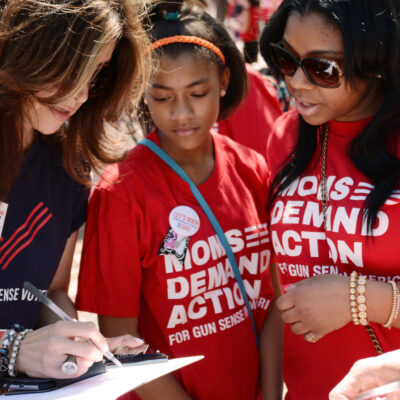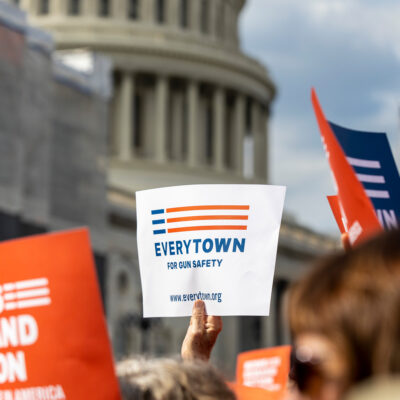Gun Violence by Police
What is the problem?
Every year, police in America shoot and kill nearly 1,100 people,1Everytown Research analysis of 2019 to 2023 Mapping Police Violence data (accessed February 21, 2024). and Black people are victims at a disproportionate rate. Curbing this gun violence requires confronting America’s history of racism, reimagining the role of police, and implementing policies that reduce police gun violence.
Gun violence is a uniquely American epidemic, as is gun violence by police. In addition to the loss of life and the family members and survivors’ pain, shootings by police have a uniquely corrosive impact on the nation: patterns of police violence dramatically reduce public confidence in police and lead some community members to see them as part of the problem.1Sixty percent of civilians (and 79 percent of Black civilians) perceive police killings of Black Americans as signs of a broader problem rather than isolated incidents. Rich Morin et al., “Behind the Badge,” Pew Research Center, January 2017, https://assets.pewresearch.org/wp-content/uploads/sites/3/2017/01/06171402/Police-Report_FINAL_web.pdf. Similarly, following the police killings of Michael Brown, Eric Garner, and Walter Scott, and the related protests, public confidence in the police hit an all-time low of 52 percent. 2020 survey data is not yet available. Jeffrey M. Jones, “In U.S., Confidence in Police Lowest in 22 Years,” Gallup, June 19, 2015, https://news.gallup.com/poll/183704/confidence-police-lowest-years.aspx. The fear sown by these shootings makes neighborhoods less safe since law enforcement cannot do its part in preventing violent crime without the assistance of the community.
Any policing strategy must include these fundamental principles:
- A strong legal standard barring unnecessary police use of force
- De-escalation, reducing officer bias, and a priority for positive law enforcement-community relationships through procedural justice
- Tools for officers at risk of misconduct
- A thorough and independent system for reviewing use of force incidents, and ensuring abusive officers can be disciplined and prosecuted
- Transparency about policies, procedures, and the use of force
Why is it an issue?
America’s gun violence epidemic includes gun violence by police.
As we have long heard from communities of color, police violence is gun violence. Indeed, 93 percent of the deaths of civilians caused by police are with a firearm,1Everytown Research analysis of 2019 to 2023 Mapping Police Violence data (accessed February 21, 2024). and Black people are the victims at a disproportionate rate—they are nearly three times more likely to be shot and killed by police than white people.2Everytown Research analysis of Mapping Police Violence data, 2019 to 2023, and US Census, “National Population by Characteristics, 2010–2019.” Curbing this gun violence and the disproportionate impact it has on Black and brown communities will require the country to confront its history of racism and structural inequity. It will also require local stakeholders to reimagine the role of police and community in promoting public safety. Every jurisdiction in the country must have policies that reduce police gun violence, including strong guardrails on when police may use force against civilians, ensuring police are held accountable when force is used, and prioritizing de-escalation, dignity, and respect.
By the numbers
1.1k
Every year, police in the US shoot and kill nearly 1,100 people.
93%
93 percent of the deaths of civilians caused by police are with a firearm.
3x




